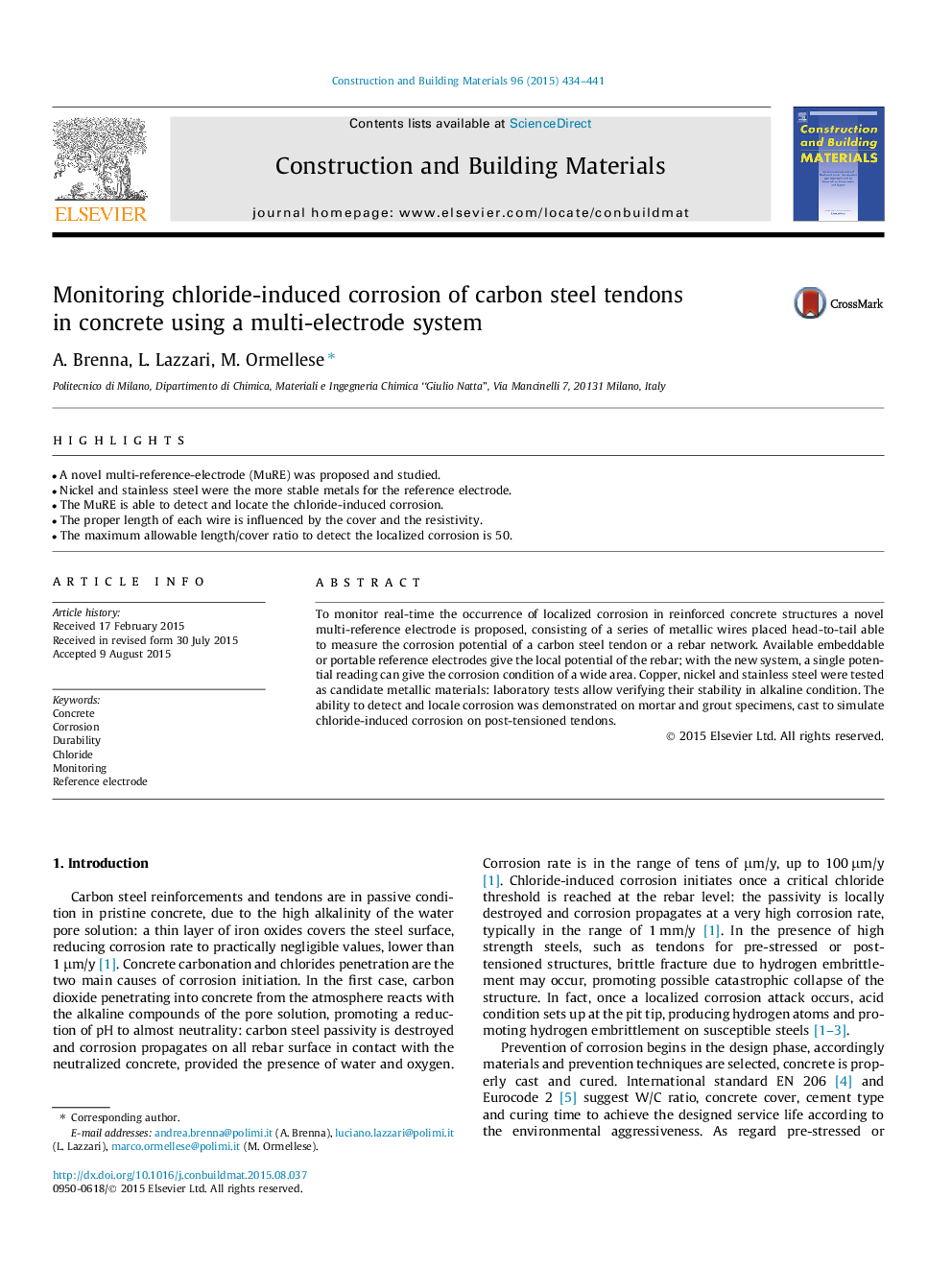| Article ID | Journal | Published Year | Pages | File Type |
|---|---|---|---|---|
| 256724 | Construction and Building Materials | 2015 | 8 Pages |
•A novel multi-reference-electrode (MuRE) was proposed and studied.•Nickel and stainless steel were the more stable metals for the reference electrode.•The MuRE is able to detect and locate the chloride-induced corrosion.•The proper length of each wire is influenced by the cover and the resistivity.•The maximum allowable length/cover ratio to detect the localized corrosion is 50.
To monitor real-time the occurrence of localized corrosion in reinforced concrete structures a novel multi-reference electrode is proposed, consisting of a series of metallic wires placed head-to-tail able to measure the corrosion potential of a carbon steel tendon or a rebar network. Available embeddable or portable reference electrodes give the local potential of the rebar; with the new system, a single potential reading can give the corrosion condition of a wide area. Copper, nickel and stainless steel were tested as candidate metallic materials: laboratory tests allow verifying their stability in alkaline condition. The ability to detect and locale corrosion was demonstrated on mortar and grout specimens, cast to simulate chloride-induced corrosion on post-tensioned tendons.
